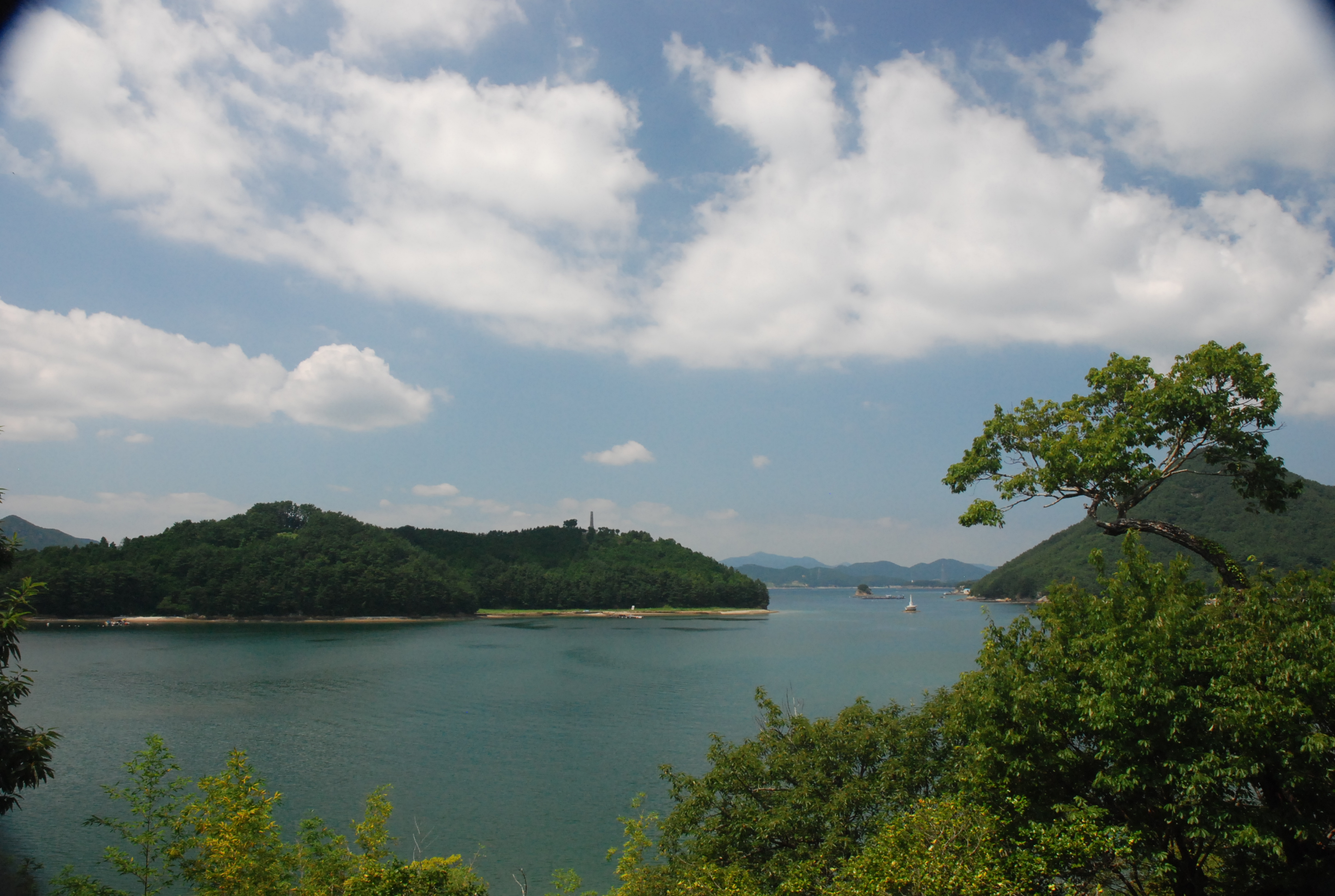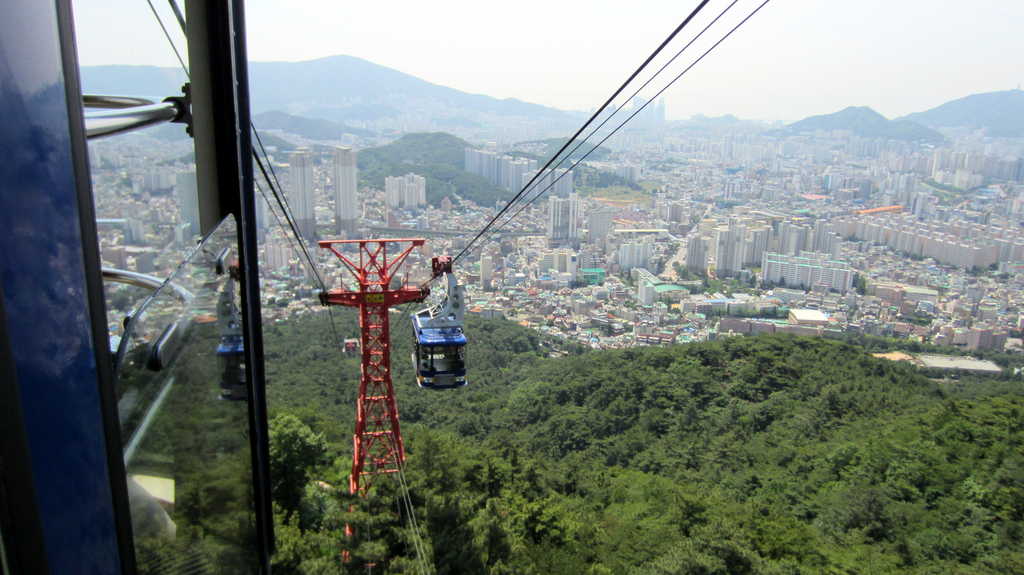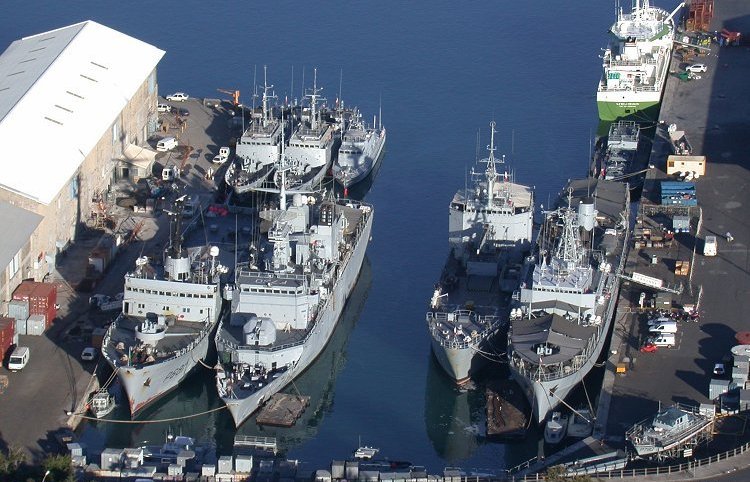|
Hansan Island
Hansan Island (한산도, 閑山島), also known as ''Hansando'', is in South Gyeongsang Province across a relatively narrow strait from Chungmu on the Tongyeong Peninsula, South Korea. History The area around the island was the site of the Battle of Hansan Island during the Imjin War where Admiral Yi Sun-Sin decisively defeated the main Japanese war fleet led by Wakizaka Yasuharu. Following the battle, Admiral Yi moved his main naval base from Yeosu to Hansan Island, as it was strategically advantageous for conducting surveillance and reconnaissance of the nearby Gyeonnaeryang Strait (견내량, 見乃梁), which was an inland route leading directly to the main Japanese base located at Busan. After King Seonjo ordered Admiral Yi Sun-Sin's arrest, imprisonment, and torture Admiral Won Gyun was assigned to lead the Korean navy. However, Won Gyun attacked the Japanese base at Busan, ignoring the tides, and was forced to retreat owing to shelling from the shore. The Japanese navy ... [...More Info...] [...Related Items...] OR: [Wikipedia] [Google] [Baidu] |
Chungmu City
Tongyeong () is a coastal city in South Gyeongsang Province, South Korea. In 2010, it had an area of and a population of 139,869 people. It is divided into 1 eup (town), 6 myeon (township) and 11 dong (neighborhood). Chungmu city and Tongyeong county were reunited in 1995, creating Tongyeong City as it is known today. It consists of Goseong Peninsula, Hansan Island, , and other islets. It was formerly known as Chungmu, after the posthumous name of Admiral Yi Sun-sin. The name Tongyeong means "command post" and is itself associated with Admiral Yi, as it refers to his principal base that was located on nearby Hansan Island. Famous people Famous people associated with the city include Yi Sun-sin, whose headquarters were located there, and Yun Isang, a noted 20th-century composer. Chungmu Halmae, or "Chungmu Grandmother", is a mythical old woman from Chungmu who gave her name to Chungmu Halmae Kimbap, a common Korean snack food. Chungmu Halmae, though mythical, is one of the mos ... [...More Info...] [...Related Items...] OR: [Wikipedia] [Google] [Baidu] |
Yeosu
Yeosu (; ''Yeosu-si''), historically also Yosu, and known to the Japanese as Reisui during the period when Korea was under Japanese rule, is a city located on the southern coast of the Korean Peninsula in South Jeolla Province, South Korea and comprises the Old Yeosu City, founded in 1949, Yeocheon City, founded in 1986, and Yeocheon County which were merged into the current Yeosu city in 1998. Characteristics The city of Yeosu consists of the Yeosu peninsula as well as 365 islands (48 inhabited, 317 uninhabited). Being midway along the southern coast of South Korea, it is flanked by Namhae County in South Gyeongsang Province to the east with a natural waterway, and the Bay of Suncheon to the west and northwest, the city of Suncheon sprawling along its banks. The city has three different city halls. On 1 April 1998, the cities of Yeosu and Yeocheon, along with Yeocheon County merged to form the unified city of Yeosu. Yeosu has cool summers and mild winters. Its ocean cli ... [...More Info...] [...Related Items...] OR: [Wikipedia] [Google] [Baidu] |
Panokseon
Panokseon ("board roofed" ship) was an oar and sail propelled ship that was the main class of warship used by Joseon during the late 16th century. The first ship of this class was constructed in 1555. It was a ship made of sturdy pine wood, and was instrumental in the victories over the numerically superior Japanese Navy during the Japanese invasions of Korea (1592–98). Admiral Yi Sun-sin (1545–1598) of the Joseon navy employed them alongside turtle ships during the war with great success. A key feature of a panokseon was its multiple decks. The first deck had non-combatant personnel, such as the rowers, who were positioned between the lower deck and the upper deck, away from enemy fire. The combatant personnel were stationed on the upper deck, which allowed them to attack the enemy from a higher vantage point. The panokseon also had a raised roofed observation platform where the commander stood. Characteristics In line with the traditional structure of Korean ships, the ... [...More Info...] [...Related Items...] OR: [Wikipedia] [Google] [Baidu] |
Won Gyun
Won Gyun (; 12 February 1540 – 27 August 1597) was a Korean general and admiral during the Joseon Dynasty. He is best known for his campaigns against the Japanese during Hideyoshi's invasions of Korea. Won was a member of Wonju Won family, which was well known for its members' military accomplishments. He was born in 1540 near Pyeongtaek and demonstrated his skill as warrior at a young age. He was qualified as a military officer and was first assigned to the northern border to defend against the Jurchens, who frequently raided Korean villages. Won led many successful campaigns with Yi Il and Yi Sun-sin against the Jurchens. After considerable accomplishments on the northern frontier, he was promoted to admiral in 1592 and sent to the southern coast of Gyeongsang Province to command the province's Western Fleet, along with Yi Sun-sin, who became admiral before Won and took command of Jeolla Province's Eastern Fleet. At the time, Won and Yi were cavalry leaders who had ... [...More Info...] [...Related Items...] OR: [Wikipedia] [Google] [Baidu] |
King Seonjo
Seonjo of Joseon (26 November 1552 – 16 March 1608) was the fourteenth king of the Joseon Dynasty of Korea from 1567 to 1608. He was known for encouraging Confucianism and renovating state affairs at the beginning of his reign. However, political discord and incompetent leadership during the Japanese invasions of Korea marred his later years.Seonjo at Biography Background King Seonjo was born Yi Yeon in 1552 in (today, Seoul), capital of Korea, as the third son of Prince Deokheung (덕흥군), himself son of |
Busan
Busan (), officially known as is South Korea's most populous city after Seoul, with a population of over 3.4 million inhabitants. Formerly romanized as Pusan, it is the economic, cultural and educational center of southeastern South Korea, with its port being Korea's busiest and the sixth-busiest in the world. The surrounding "Southeastern Maritime Industrial Region" (including Ulsan, South Gyeongsang, Daegu, and some of North Gyeongsang and South Jeolla) is South Korea's largest industrial area. The large volumes of port traffic and urban population in excess of 1 million make Busan a Large-Port metropolis using the Southampton System of Port-City classification . Busan is divided into 15 major administrative districts and a single county, together housing a population of approximately 3.6 million. The full metropolitan area, the Southeastern Maritime Industrial Region, has a population of approximately 8 million. The most densely built-up areas of the city are situat ... [...More Info...] [...Related Items...] OR: [Wikipedia] [Google] [Baidu] |
Japan
Japan ( ja, 日本, or , and formally , ''Nihonkoku'') is an island country in East Asia. It is situated in the northwest Pacific Ocean, and is bordered on the west by the Sea of Japan, while extending from the Sea of Okhotsk in the north toward the East China Sea, Philippine Sea, and Taiwan in the south. Japan is a part of the Ring of Fire, and spans an archipelago of 6852 islands covering ; the five main islands are Hokkaido, Honshu (the "mainland"), Shikoku, Kyushu, and Okinawa. Tokyo is the nation's capital and largest city, followed by Yokohama, Osaka, Nagoya, Sapporo, Fukuoka, Kobe, and Kyoto. Japan is the eleventh most populous country in the world, as well as one of the most densely populated and urbanized. About three-fourths of the country's terrain is mountainous, concentrating its population of 123.2 million on narrow coastal plains. Japan is divided into 47 administrative prefectures and eight traditional regions. The Greater Tokyo Ar ... [...More Info...] [...Related Items...] OR: [Wikipedia] [Google] [Baidu] |
Wakizaka Yasuharu
(1554 – September 26, 1626), sometimes referred to as Wakizaka Yasuharu, was a ''daimyō'' (feudal lord) of Awaji Island who fought under a number of warlords over the course of Japan's Sengoku period. Wakisaka originally served under Akechi Mitsuhide, a vassal of Oda Nobunaga. Biography In 1581, he took part on Tenshō Iga War, he was one of several who led Nobunaga's troops in the Siege of Hijiyama. The following year, Akechi betrayed Oda Nobunaga and took his power and lands, but was defeated two weeks later at the Battle of Yamazaki. Wakisaka then joined the victor, Hashiba Hideyoshi, who had become a conspicuous figure as a retainer of Oda Nobunaga. Following the Battle of Shizugatake in 1583, Wakisaka came to be known as one of the ''shichi-hon-yari'' (七本槍), or Seven Spears of Shizugatake. These Seven would be among Hideyoshi's most trusted generals, especially in naval combat. Wakisaka was granted the fief of Awaji Island, worth 30,000 koku, in 1585 ... [...More Info...] [...Related Items...] OR: [Wikipedia] [Google] [Baidu] |
Naval Base
A naval base, navy base, or military port is a military base, where warships and naval ships are docked when they have no mission at sea or need to restock. Ships may also undergo repairs. Some naval bases are temporary homes to aircraft that usually stay on ships but are undergoing maintenance while the ship is in port. In the United States, the United States Department of the Navy's General Order No. 135 issued in 1911 as a formal guide to naval terminology described a naval station as "any establishment for building, manufacturing, docking, repair, supply, or training under control of the Navy. It may also include several establishments". A naval base, by contrast, was "a point from which naval operations may be conducted". In most countries, naval bases are expressly named and identified as such. One peculiarity of the Royal Navy and certain other navies which closely follow British naval traditions is the concept of the stone frigate: a naval base on land that is named l ... [...More Info...] [...Related Items...] OR: [Wikipedia] [Google] [Baidu] |
South Gyeongsang
South Gyeongsang Province ( ko, 경상남도, translit=Gyeongsangnam-do, ) is a province in the southeast of South Korea. The provincial capital is at Changwon. It is adjacent to the major metropolitan center and port of Busan. The UNESCO World Heritage Site Haeinsa, a Buddhist temple that houses the '' Tripitaka Koreana'' and tourist attraction, is located in this province. Automobile and petrochemical factories are largely concentrated along the southern part of the province, extending from Ulsan through Busan, Changwon, and Jinju. Etymology The name derives ; . The name derives from the names of the principal cities of Gyeongju () and Sangju (). History Before 1895, the area corresponding to modern-day South Gyeongsang Province was part of Gyeongsang Province, one of the Eight Provinces of Korea during the Joseon dynastic kingdom. In 1895, southern Gyeongsang was replaced by the districts of Jinju in the west and Dongnae (modern-day Busan) in the east. In 1896, they w ... [...More Info...] [...Related Items...] OR: [Wikipedia] [Google] [Baidu] |






